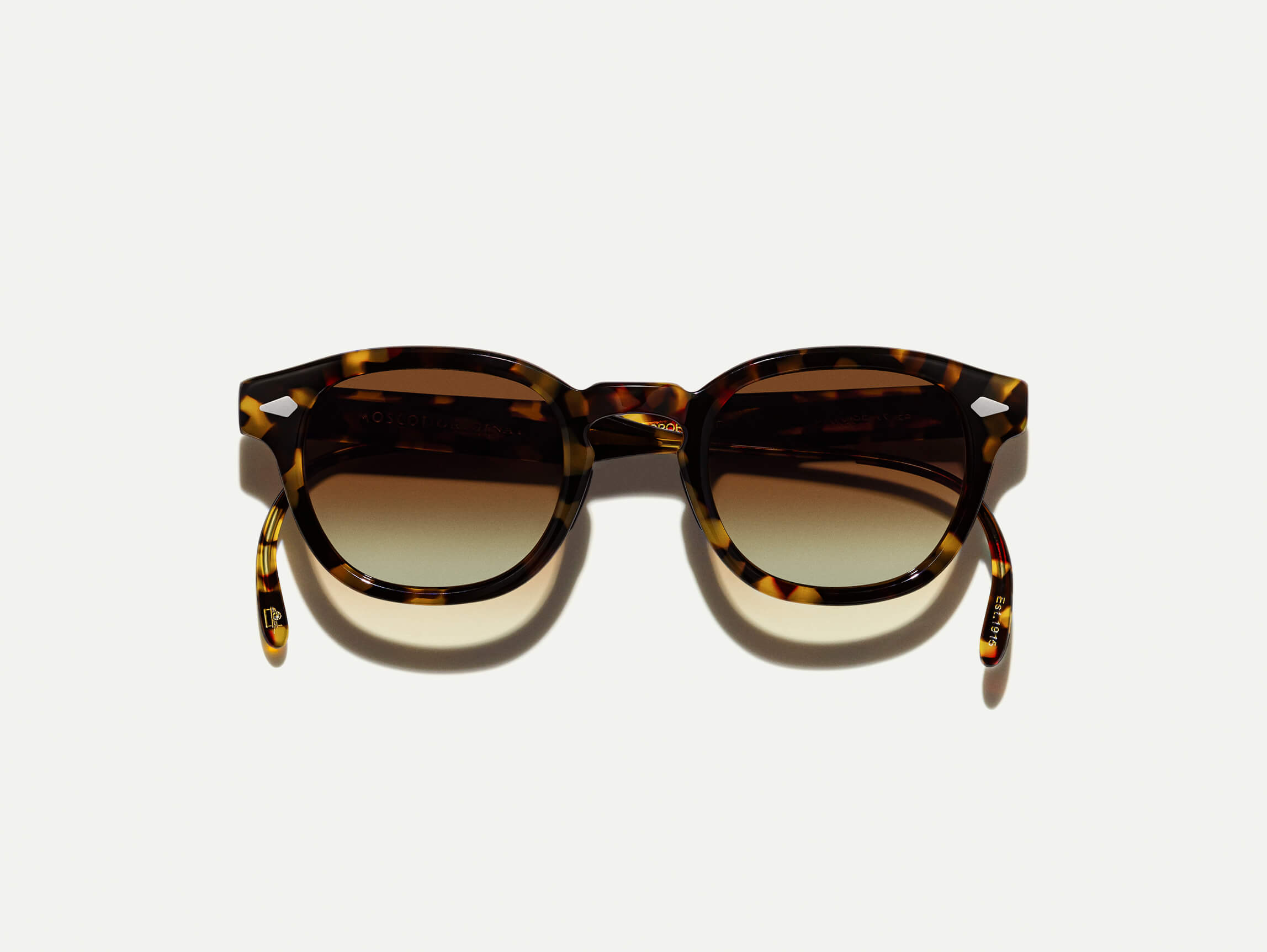MOSCOT’s Complete Guide to Polarized Sunglasses!
Here at MOSCOT, one of the most common questions we receive is ‘What’s the difference between polarized and non-polarized sunglasses?’ It’s a good question and one worth knowing the answer to, as polarized lenses typically come at a higher price point than non-polarized lenses.
That’s why we’ve put together this guide: to help you understand the differences between polarized and non-polarized sunglasses, the best uses for polarized sunglasses, and how to decide if polarized or non-polarized sunglasses are the right choice for you!
You can also explore our complete selection of
polarized sunglasses here to find your perfect set of sunnies!
What are polarized sunglasses?
All
MOSCOT Sunglasses provide optimal protection against UV radiation (harmful rays from the sun). Remember that UV radiation exists year-round and that the color of the lens has no impact on UV radiation protection by the lens.
Polarized lenses are fabricated in a unique way that is specifically designed to reduce glare from intense reflected light. As glare is caused from the sun reflecting off water, or a solid surface, polarized lenses are particularly beneficial while at the beach, lake, or around snow, or while participating in outdoor activities such as water sports, snow sports, or fishing.
Non-polarized sunglasses, on the other hand, also block harmful UV rays from reaching the eyes. However, the lenses aren't treated the same as polarized lenses and do not help to reduce harsh glares. Non-polarized glasses are better suited for activities that require the use of LED screens, as polarized sunglasses make it difficult to see LED light. This is why most pilots use non-polarized sunglasses so that they can better see their various screens and instruments.
How do polarized sunglasses work?
To understand how polarized sunglasses work, you first need to know a little about sunlight and glare. When sunlight reaches uneven surfaces, like the grass or sidewalk, it is scattered, so no glare occurs (this accounts for most of the sunlight that reaches our eyes and is known as vertical light). However, when sunlight hits a smooth, flat surface—like a body of water—it is reflected in a single direction, resulting in a harsh glare, also known as horizontal light. Polarized lenses are specially treated to absorb this horizontal light while still allowing other vertical light to pass through, reducing perceived glares.
A brief history of polarized sunglasses
So, when were polarized sunglasses invented? Believe it or not, polarized sunglasses have existed for over 85 years! They were invented in 1936 by an inventor named Edwin H. Land. Land had previously patented the Polaroid filter, which filtered out horizontal light. He then applied that filter to sunglass lenses, thus creating the first pair of polarized sunglasses.
These original polarized sunglasses were first sold to the public in 1937. They were also extremely popular with pilots during World War II (when plane instruments were largely analog). Since then, polarized sunglasses have become increasingly popular among outdoor enthusiasts, especially those who like to fish and ski. The rest, as they say, is history!
Best uses for polarized sunglasses
As mentioned, polarized sunglasses are extremely popular in various outdoor activities, especially those involving water or snow. They can be quite beneficial in activities like:
- Fishing
- Boating
- Skiing
- Snowboarding
- Golfing
Take fishing, for example. Polarized sunglasses reduce the glare from the surface of the water, allowing anglers to see any fish that might be swimming underneath.
Boating is another activity that is great for polarized sunglasses. The harsh glare of the sun off water can make it difficult (or even dangerous!) to operate a boat, especially at high speeds. Polarized glasses reduce that glare, allowing the driver to better see where they are going.
Similarly, when the sun reflects off the snow, it can make it hard to see while enjoying winter sports like skiing and snowboarding. Polarized sunglasses reduce that glare, allowing skiers to see their way down the run better and look out for other obstacles and people on the mountain.
Overall, polarized sunglasses are best suited for outdoor activities that are often hampered by harsh glares from the sun.
Are polarized sunglasses better?
Polarized sunglasses aren’t necessarily better than non-polarized sunglasses; it all depends on what you are using the sunglasses for. If you’re just bopping around town and want a stylish way to protect your eyes, non-polarized sunglasses should do the trick just fine.
However, if you find yourself spending a lot of time doing water sports or winter mountain sports, a pair of polarized sunglasses could be super beneficial. Once you determine what you’ll be using your sunglasses for, you can decide whether polarized or non-polarized sunglasses are right for you.
How to choose polarized sunglasses
If you think polarized sunglasses are right for you, the next step is picking your perfect pair! You can explore our complete range of
polarized sunglasses here, offered in a wide selection of our most popular frames and colors.
If you’re unsure of how you might look, many of our frames come with the ability to try them on virtually. Head over to our
Virtual Try-On to try on frames without leaving your home! It’s like being in your own personal MOSCOT store from the privacy of your own home.





























